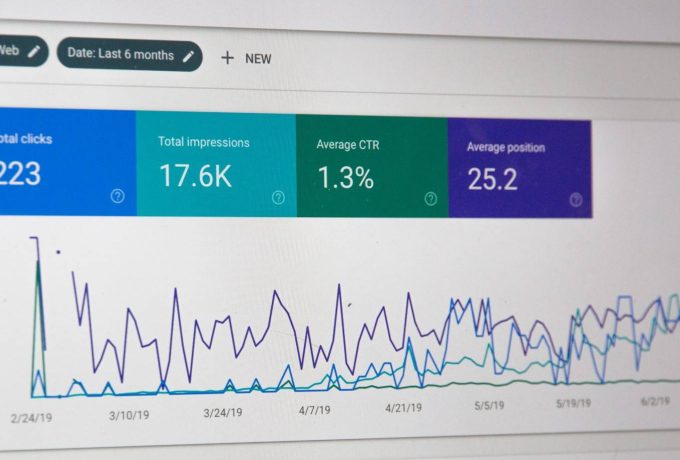Home Articles Web design & development The importance of SEO optimised web design
In an age where digital presence is a necessity in business, web development is the foundation of your success. You could have the best website in the world, but what good is this if nobody can find it? That is where SEO (search engine optimisation) comes into action. We want to take you through the world of SEO-optimised web development, exploring everything from keywords to Google rankings.
The SEO essentials
Keywords – the building blocks of SEO
Let’s start with the basics. Keywords are the words and phrases people use to search for information online (yes, it really is that simple!). Think, when you search for a product, service, or information, what are the words of phrases you use to seek the information you need? These are unique for every organisation, and there will be multiple relevant keywords for you depending on what you offer, your location, and all the other characteristics of your business and offerings.

According to Web Tribunal, 75% of users will never go to the second page of search engines. This is a huge number, and highlights how important it is to ensure that you optimise your website to allow your organisation to have a higher ranking in these search engines. This will improve your visibility, and users are more likely to find your website. Once they have accessed your website, you then need to focus on keeping them engaged, to convert these visitors into paying customers.
To effectively harness the power of keywords, consider these key principles:
- Relevance: Ensure that the keywords you choose are relevant to your business and website content.
- Search Volume: Select keywords with a reasonable search volume. You want keywords that people are frequently searching for, but with low competition. If lots of other businesses offer similar services and use similar keywords, high competition can make it tough to rank for them.
- Long-tail Keywords: These are longer, more specific phrases that can bring in more targeted traffic. For instance, including your location and other brand characteristics (e.g. affordable, luxury) will help users to narrow down their search, and find the most suitable service for them.
- User Intent: Understand the intent behind keywords. Are users looking for information, products, or services? Take this on board, make a plan, and tailor your content accordingly.

On-page SEO
Now that we’ve got our keywords sorted, let’s talk about on-page SEO. This involves optimizing individual pages on your website to improve their visibility in search results.
The pages that you have on your website will differ between organisations. For example, you might need pages that display products you sell, informational pages, or a contact page. Each organisation is unique, so the pages you include on your website should be thoughtfully designed to meet the needs of your visitors, and specially crafted to maximise the likelihood of appearing in search engine results pages (SERPs).
According to Hubspot, companies creating and sharing blogs produce an average of 67% more monthly leads than companies who don’t blog. Creating a website that allows you to publish posts to inform your audience is incredibly beneficial, especially considering that they can increase leads by such a significant amount!
Search engines ‘crawl’ (or scan) the pages on your website. They analyse the text, images, and other elements and determine their suitability to appear in certain search results. They then rank the page based on this analysis. Therefore, improving your SEO increases your chances of search engines deeming your content appropriate, and listing it in search results.
- Title Tags: these are the clickable headlines displayed on a search page. Craft compelling title tags that include your target keywords, and make it clear to the user what the page is showing them. Keep them under 60 characters for optimal display on search engine results pages.
- Meta Descriptions: these are the short summaries provided under the ‘headlines’ or title tags. Meta descriptions should include your keywords, as well as providing a brief, enticing summary of the page’s content.
- Header Tags: Use header tags (H1, H2, H3, etc.) throughout your content to provide structure. This helps search engines understand the hierarchy of your information when they are crawling pages.
- Optimize Images: Compress and name images with descriptive filenames and ALT tags that include relevant keywords. This shows the search engines that your images are relevant and add value to the content of the page.
The technical side of SEO
Website speed
Web page load time statistics show that the average speed for a first-page Google result is 1.65 seconds. Additionally, conversion rates for sites that load in one second are 3 times higher than sites that took 5 seconds to load. Slow websites not only drive users away but can also negatively impact your search rankings. This is why it is important to ensure that you have trusted web hosting, to deal with any issues before they come to the surface, and maintain quick loading times.

To speed up your site, consider the following:
- Compress Images: Large images can slow down your website. Use image compression tools to reduce file sizes without sacrificing quality.
- Minimize HTTP Requests: Reduce the number of requests your website makes to load various elements. Combine CSS and JavaScript files where possible.
- Leverage Browser Caching: Browser caching allows elements of your site to be stored locally on a user’s device, speeding up future visits.
- Content Delivery Networks (CDNs): CDNs distribute your website’s content across multiple servers, reducing the distance between your server and the user, thereby decreasing load times.

Mobile friendly design
With almost 60% of all searches coming from a mobile device (source), having a mobile-friendly website is no longer optional; it‘s a necessity.
To ensure your website is mobile-friendly:
- Use responsive design techniques that adapt to various screen sizes.
- Test your website on different devices to guarantee a seamless user experience.
- Optimize images and videos for mobile consumption.
Off-page SEO
Backlinks
Backlinks are like “votes” from other websites, vouching for the quality of your content. The more high-quality backlinks you have, the more authoritative your website appears to search engines. Search engines can see how many quality backlinks you have from other sites, and will rank you higher if they see you have multiple other, high quality websites linking back to your page.

Here’s how to earn quality backlinks:
- Create Outstanding Content: Content that’s informative, unique, and valuable is more likely to be linked to by other websites.
- Outreach: Connect with other websites and ask for backlinks where relevant.
- Guest Blogging: Contribute guest posts to reputable websites in your industry with backlinks to your own content.
- Social Media: Share your content on social platforms to increase its visibility and potential for backlinks.

The ongoing SEO journey
SEO is not a one-and-done task. It’s a continuous process of monitoring, analysing, and adapting. Regularly reviewing your website’s performance by using tools like Google Analytics and Search Console can help you understand what is working well for you, and what requires improvement.
Remember, SEO-optimised web development isn’t just about pleasing search engines; it’s about creating an exceptional user experience. By focusing on your users and providing valuable content, you’ll naturally improve your rankings.
Now, armed with these insights and tips, you’re well on your way to improving your website’s visibility and climbing those Google rankings. If you need help with improving the performance and ranking of your website, then reach out to us today! We have a fantastic team of expert consultants who understand business, and want to help you on your journey towards embracing technology and making it work harder for you.